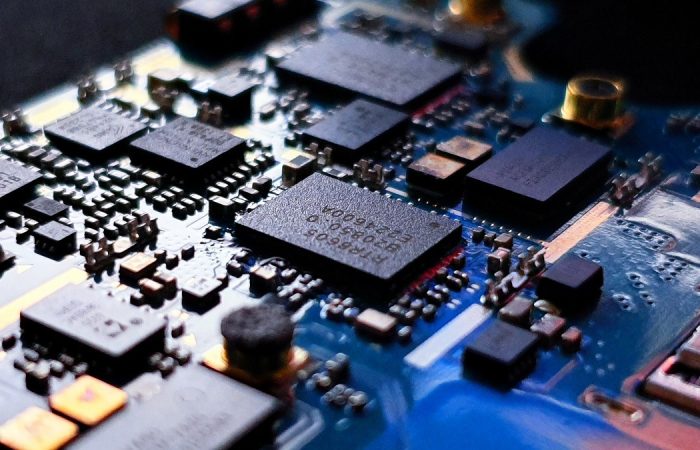On Wednesday, November 8, 2023, the Center for Strategic & International Studies (CSIS) held an online discussion on what intellectual property (IP) issues Taiwanese companies are facing as they operate within China’s sphere of influence, as well as how U.S. firms can learn from and respond to similar situations. Titled “Manufacturing beyond Shores: The Taiwanese Checklist Approach to Intellectual Property Protection,” this event was held a few months after CSIS released a report by the same name. The goal of the event was to discuss general conclusions made by the report, including the risks that foreign firms face in China regarding IP theft, which stretches across many industries, as well as what actions stakeholders can take to mitigate that risk. The event was conducted as a two-way conversation between host Alexander Kersten, deputy director and fellow of CSIS’ Renewing American Innovation Project, and panelist Emma Hsu, non-resident adjunct fellow of the same project.
The introduction kicked off with Alexander Kersten summarizing the background of IP issues. Firstly, “IP is the engine of innovation,” said Kersten. However, as instances of Chinese theft of foreign IP rises, many worry that this will discourage foreign companies from investing in China. In fact, Kersten explained, the U.S. Congress has suggested that it may void the U.S. patents of Chinese firms in retaliation for said theft by Chinese parties. Kersten does believe that it would start a “tit-for-tat response,” which would not produce positive results for any of the stakeholders. This is where Emma Hsu comes in. Her aforementioned report discusses the ways in which Taiwanese firms are able to prevent IP loss; lessons which U.S. firms may be able to learn from as they navigate Chinese markets.
According to Hsu, in the face of strategic competition, it is “important to redetermine what IP even is.” IP is what “gives innovators a protection for their market share,” which can be patents, but in most cases are trade secrets that are not publicly discussed while requiring a lot of industry experience to be knowledgeable about. For example, TSMC holds 90% of their IP as trade secrets, and only 10% as patents. So the question that follows is, how do they protect their IP even as they “continue to invest in China?” They “rely on non-legal measures” to protect their IP, said Kersten in response. Hsu continued that many of these measures are preemptive, so as to not reach courts. According to Hsu, Taiwan has “ambiguous foreign relations especially with China” which puts it “not in a good place to negotiate legal reforms” with China. The reason why China is this way is because “China has always traded market access for technology,” said Hsu. Companies appear to be willing to take that risk in order to expand into China, though this does mean that industries have had to rely on themselves a lot more while adapting to the market landscape in China.
Hsu then described that the key to protecting IP is through simplifying where the main leakage points are. These can be mapped down on the value chain through production processes, and mainly include the beginning—research & development (R&D) and product development—and the end—sales and marketing. Hsu further explained that the “secret smiling curve,” a concept depicted by Figure 4 in her aforementioned report, shows four main players where IP leakage occurs. These four key parts are personnel, local partner companies, suppliers, and factories. Also on the curve is the production step where each player is most likely to produce an IP leak. Personnel is aggregated in product conception and R&D, presenting a unique problem as employee turnover in China is very high. In fact, 87% of IP loss for Taiwan firms is from departing employees. In order to mitigate this issue, employees are restricted in technology they bring in, such as their personal phones, information they can share over text and email, etc.
For U.S. companies, Hsu said it was important to understand where the company is generating the most value and what points are producing the most leakage. One downside in investing in China for these companies is that more of their resources go to IP protection, but if they follow these preemptive measures they can preserve “their advantage.” Hsu did question whether employing Taiwanese practices was worth it for U.S. companies. “Implementing some of the specific ideas in my report may be costly,” she said. These responses may be “applicable for companies that already have that structure” in place, “but for smaller companies they may have to think about it in a different way.”
Finally, Kersten asked Hsu if de-risking was a viable option for protecting IP. Can the U.S. “protect IP better by completing disengaging?” In response, Hsu said that less than 20% of thought-leaders in the world “think that complete decoupling is a measure to take.” China does produce a lot of native innovation, so it “would be detrimental to the U.S. ability to innovate if decoupling were to occur.” In terms of de-risking, Hsu did point out that players can look to non-legal measures.
To conclude the event, Kersten added that the “U.S. is focused on finding creative ways on working abroad,” but “what goes in one country may not go in another,” citing Japan and India as examples of differing systems. As the U.S. looks into places like Southeast Asia, “it is a wake up call to the U.S. that if it wants to be” competitive globally, they have to learn how to engage in ways that are productive.




